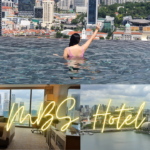
Sembawang hot spring park is the only natural hot spring on mainland Singapore. The hot spring was located on swampy land owned by Seah Eng Keong, a merchant, who had wanted to keep the spring a secret until the water had been analysed. However, in 1908, municipal ranger William Arthur Bates came across the spring and made it known to the press.
In 1909, Seah started to bottle and sell the mineral-rich spring water under the brand Zombun. Local beverage firm Fraser & Neave (F&N) later took over the spring in 1921 and bottled its water under brands such as Zom and Singa Water. During World War II, the Japanese converted this area into thermal baths until 1944, when a bomb fell here and disrupted the water outflow. As a result, the spring could not produce enough water for bottling for many years. Instead, it formed marshy pools which attracted nearby residents who bathed, washed clothes or cooked eggs using the hot water. After the spring returned to its original flow rate, F&N built a factory nearby named Semangat Ayer, which opened in 1967 and bottled the spring water under the brand Seletaris.
The factory closed after the area was acquired by the government in 1985 for an expansion of Sembawang Air Base. Following appeals from the community to preserve the spring for its scientific and historical value, the government kept the spring open to the public and later redeveloped the area into Sembawang Hot Spring Park, which opened in January 2020.

FEATURED VIDEO
ENTRANCE
Located off Gambas Avenue, Sembawang Hot Spring Park features new cascading pools and a water collection point, enhanced accessibility for wheelchair users, and educational panels where visitors can learn about Singapore’s only hot spring park’s history and geology. The park’s rustic environment, reminiscent of old kampungs, also holds many collective memories for the community.


Floral WALK
Visitors can enjoy the new Floral Walk and see fruit trees and edible plants commonly found in kampungs, and flowers commonly seen in the 1960s and 1990s. The rustic environment is further enhanced by unpaved paths and naturalised streams flowing from the hot spring, which mimics the freshwater swamp forest landscape. There are seating areas sheltered by planted trellises featuring flowering creepers such as the Elephant Climber (Argyreia nervosa). The public can also learn more about the history of the site and geothermal processes behind the formation of a hot spring through interpretative signs at locations of interest.





HOT SPRING AREA
Enjoy a foot soak at the edge of the cascading pool where water gradually cools as it flows down four tiered pools! The pool mimics the hot spring in its natural state, where overflowing pools of hot water form after emerging from the ground. Water emerges at the top at 70°C and will flow out at the final pool at 40°C, which is the optimal temperature for contact with skin. Collect hot spring water at 70°C in your own buckets and enjoy it at rest areas sheltered by trellises. Come and explore the interactive water play feature that allows children to learn about the groundwater cycle, as well as play safely with the warm spring water. It is designed as a table to allow everyone to use as a gathering space at the hot spring.






















